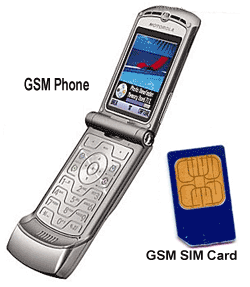
- GSM - Home
- GSM - Overview
- GSM - Architecture
- GSM - Specification
- GSM - Addresses & Identifiers
- GSM - Operations
- GSM - Protocol Stack
- GSM - User Services
- GSM - Security & Encryption
- GSM - Billing
- GSM - Mobile Phones
- GSM Useful Resources
- GSM - Quick Guide
- GSM - Useful Resources
- GSM - Useful Acronyms
- GSM - Discussion
GSM - The Mobile Station
The MS consists of the physical equipment, such as the radio transceiver, display and digital signal processors, and the SIM card. It provides the air interface to the user in GSM networks. As such, other services are also provided, which include:
Voice teleservices
Data bearer services
The features' supplementary services

The MS Functions
The MS also provides the receptor for SMS messages, enabling the user to toggle between the voice and data use. Moreover, the mobile facilitates access to voice messaging systems. The MS also provides access to the various data services available in a GSM network. These data services include:
X.25 packet switching through a synchronous or asynchronous dial-up connection to the PAD at speeds typically at 9.6 Kbps.
General Packet Radio Services (GPRSs) using either an X.25 or IP based data transfer method at speeds up to 115 Kbps.
High speed, circuit switched data at speeds up to 64 Kbps.
We will discuss more about GMS services in GSM - User Services.
What is SIM?
The SIM provides personal mobility so that the user can have access to all subscribed services irrespective of both the location of the terminal and the use of a specific terminal. You need to insert the SIM card into another GSM cellular phone to receive calls at that phone, make calls from that phone, or receive other subscribed services.